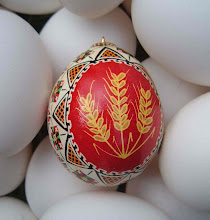Tuesday, April 20, 2010
Gardening in Sandy Soil
It rained most of the weekend, and the picture above shows the soil on Monday. It is never, never, too wet. Before long there will be hot afternoons when the surface temperature is 120 degrees.
Gardening in sandy soil has some real benefits, and some significant challenges. We can start the garden much earlier than those around us who have heavy soil. It's ridiculously easy to work with, and weeds pull out very easily (pull them when the soil is dry, and the roots don't have a good hold. Then water to help the disturbed roots of your garden plants). In very wet seasons it's an advantage to have such good drainage, and if water is available we have the ideal situation of being able to control just how much water the plants get. It's too dry for slugs.
On the other hand:
This soil is so sandy it doesn't hold fertility, and fertilizer of some sort needs to be added every year. Adding organic matter is critically important, both to improve the baseline fertility, but also because the higher the organic content the better the soil will hold on to water and any fertilizer that's added. The biggest mistake most gardeners make in the community gardens is not adding enough fertilizer at planting time, and then not side-dressing with more fertilizer during the growing season. There is bagged organic fertilizer available, and I also use some 5-10-10 (more on this another time) because it's so much cheaper and I need so much. alas.
The soil is so dry and so devoid of organic matter there is not the vibrant microbial life that supports healthy plant growth, and makes nutrients available, making even more fertilizer necessary. No earthworm will make its home in the hot, dry, sandy soil. When I've brought earthworms in as part of a pile of horse manure, they stay only as long as there's a moist pile of manure and straw. As soon as the manure is distributed they go deep and/or leave. Adding leaves, compost, manure, coffee grounds, peat - just about any organic matter you can get, is critically important. A compost pile of your own is useful, but it's also a great idea to let the weeds you've pulled just stay in place and add back that organic matter. If you want a neater looking garden, then dig a little hole in the path, throw your weeds in, and then cover. Over the years some people have added significant amounts of organic matter to their plots in the community garden, and it's possible to pick out those plots because the soil has become darker and richer.
The surface dries out so quickly it's good to water small seeds planted in shallow drills frequently until they germinate. Carrots tend to germinate poorly in the sandy soil, (even though the soil won't crust over, which is an advantage). But it can take as much as 3 weeks for carrots to germinate, and in that time they need to have some moisture available.
Many of you will either have read that some things should be planted in raised beds or hills, or have done that in other gardens. The only reason to do that in sandy soil is to increase the depth of fertile soil, if that's an issue. But hills and raised rows can require more water. Water tends to run off the mound. A principal reason cucumbers are grown in hills is so they won't have "wet feet" from sitting in moist soil. That is never a problem for us. In fact, I grow most of my transplants in bowls, rather than hills, so they will collect and hold water. The only other reason to plant in raised beds is they will keep you from walking close to the plants. It's very important to avoid compressing the soil near your plants, so the roots have a nice loose soil to explore. After I've prepared a row but before I plant, I loosen the soil adjacent to the row by inserting my shovel and lifting the soil, as I've done in the picture below (the path on the right is compressed. The stake marks where the row will be planted, to the left of the string).
It's better to water deeply less often, than to give a light watering frequently. Roots will tend to grow where the water is, and you want deep roots. If there's plenty of moisture at the surface the roots will stay near the surface, making the plants more susceptible to heat and dry spells when you might not be able to water.
Subscribe to:
Post Comments (Atom)





No comments:
Post a Comment